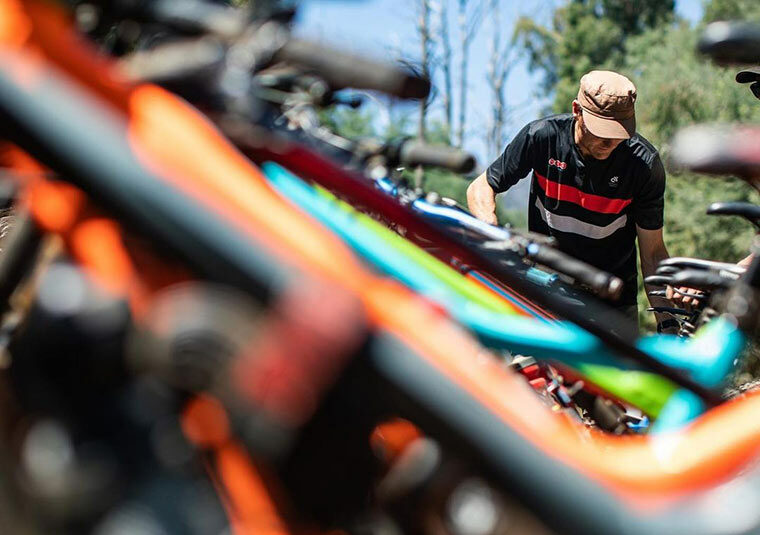Mountain biking is a thrilling and challenging activity that can provide a sense of adventure and accomplishment. However, it is also important to be aware of the risks involved and to take steps to minimise them.
Here are some common risks associated with mountain biking and a few tips to stay safe:
Falls and crashes
Mountain biking involves riding over rough terrain and can be physically demanding, which increases the risks of falls and crashes. To reduce the likelihood of falling, be sure to use proper body positioning and maintain control of your bike at all times. Wearing a helmet and protective gear can also help to mitigate the severity of injuries in the event of a fall.
Weather-related hazards
Mountain biking can be affected by a range of weather conditions, including rain wind and extreme heat. Make sure to check the forecast before setting out and be prepared for weather changes. Bring a light rain jacket if there’s a chance of rain and pack plenty of water to stay hydrated if it’s going to be hot.
Mechanical issues
Mountain bikes are subject to wear and tear, and mechanical issues can arise while out on the trail. To reduce the risk of mechanical issues, make sure to regularly maintain your bike and carry basic tools and supplies like a spare inner tube and multi-tool.
Trail hazards
The trails used for mountain biking can be rough and uneven and may contain obstacles such as roots, rocks and drops. To stay safe, pay attention to the trail and be prepared for unexpected hazards. Ride within your skill level and be mindful of your surroundings.
Encountering wildlife
Mountain biking can take you into areas where you may encounter wildlife, at Lake Mountain be particularly aware of snakes. To reduce the risk of a bad encounter with wildlife, be sure to follow proper safety protocols and be conscious and respectful of the animals’ habits.
Snakes
Snakes are cold-blooded, and you are unlikely to come across them in the southern parts of Australia during winter. In the summer months, however, they are often sighted out in the open warming themselves in the sun. It is not uncommon to come across snakes on the trails of Lake Mountain. Snakes are very aware of human presence and they will most often stay clear of the trails, so stick to the trails and there will be less chance of any encounters. That said, you should always be prepared and understand what to do if you do come across a snake.
Pay attention to your surroundings, and be conscious that you are in the snake’s environment. Don’t just assume that a stick is simply a stick. Wearing appropriate clothing and footwear can also help avoid a negative encounter with a snake. Long pants in areas where snakes are present can be a good idea.
Here’s what to do if you come across the snake on the trail:
- Stand still and try to determine what the snake is doing.
- Once you have worked out what the snake is doing, move away slowly in the opposite direction, or let the snake pass while you stay still.
- Don’t try to touch, handle or be aggressive towards the snake. This is how many snake bites occur.
Here’s what to do if you do get bitten by a snake:
- Don’t wash or clean the wound or try to suck the poison out like they do in the movies.
- Call for help using your mobile phone or by using a personal homing beacon if you have one.
- Stay calm and wait until help arrives. Moving around too much will only help spread the venom throughout your body.
- Apply pressure immobilisation to the bite area. This means bandaging the bite area as tightly as you would a sprained ankle and continue the bandaging up the affected limb.
- Get a photo of the snake if you can. If this is unrealistic, try to take note of the snakes defining features; colour, appearance, etc. This can help to quickly identify the type of snake and speed up the provision of anti-venom.
We should all respect that when we are in the bush, we are in a snake’s natural habitat. To manage our encounters with them, preparation and education is the most important factor. It is recommended that if you spend time out enjoying the bush, you and your friends should be up to date with a first aid certificate. This will ensure that in the unlikely event of first aid being required, you are all prepared.









